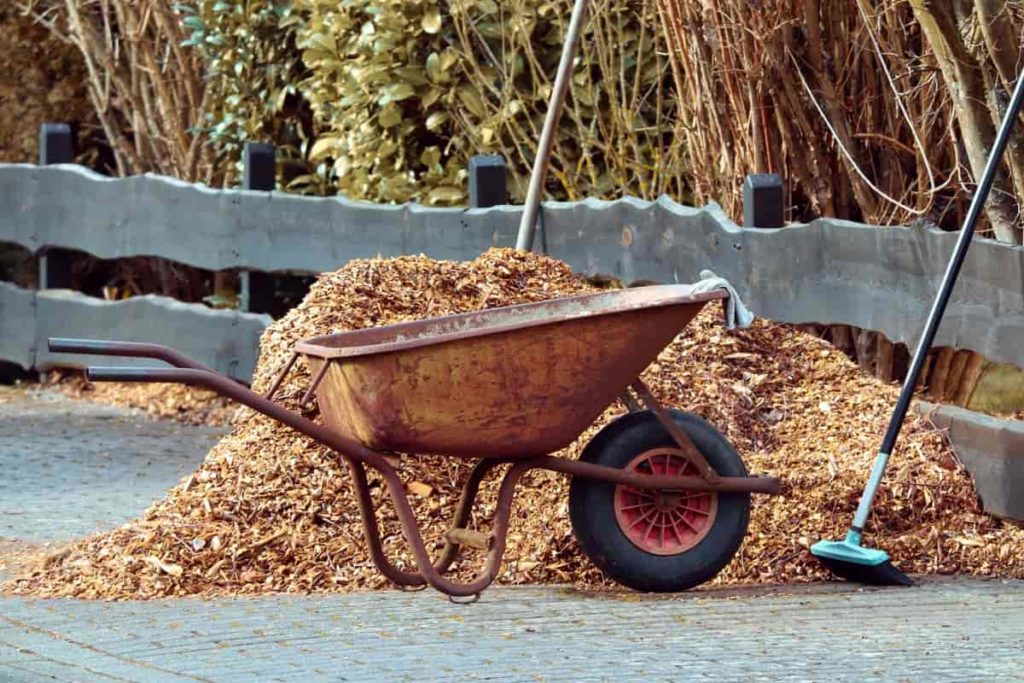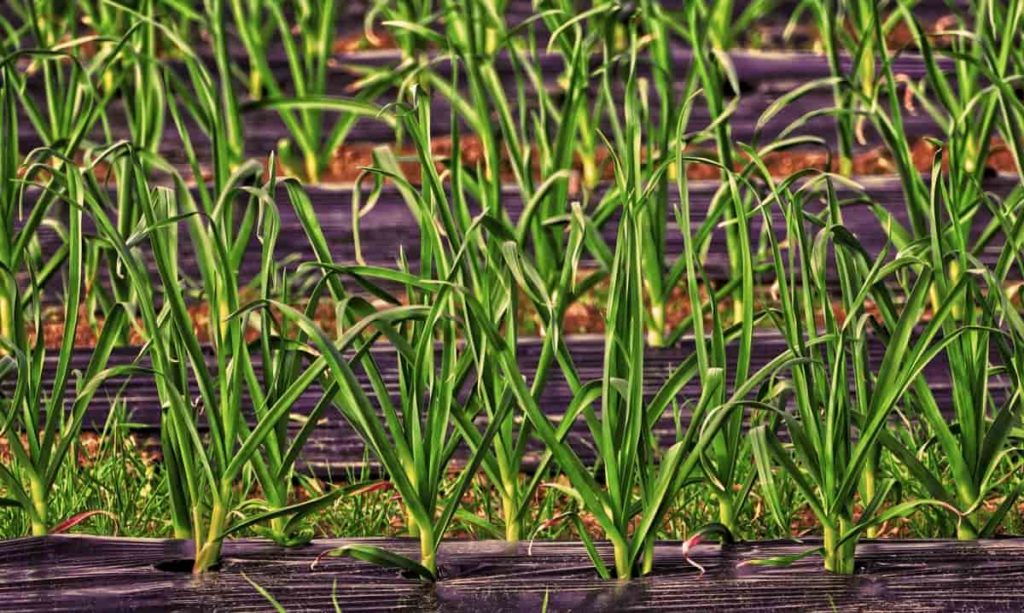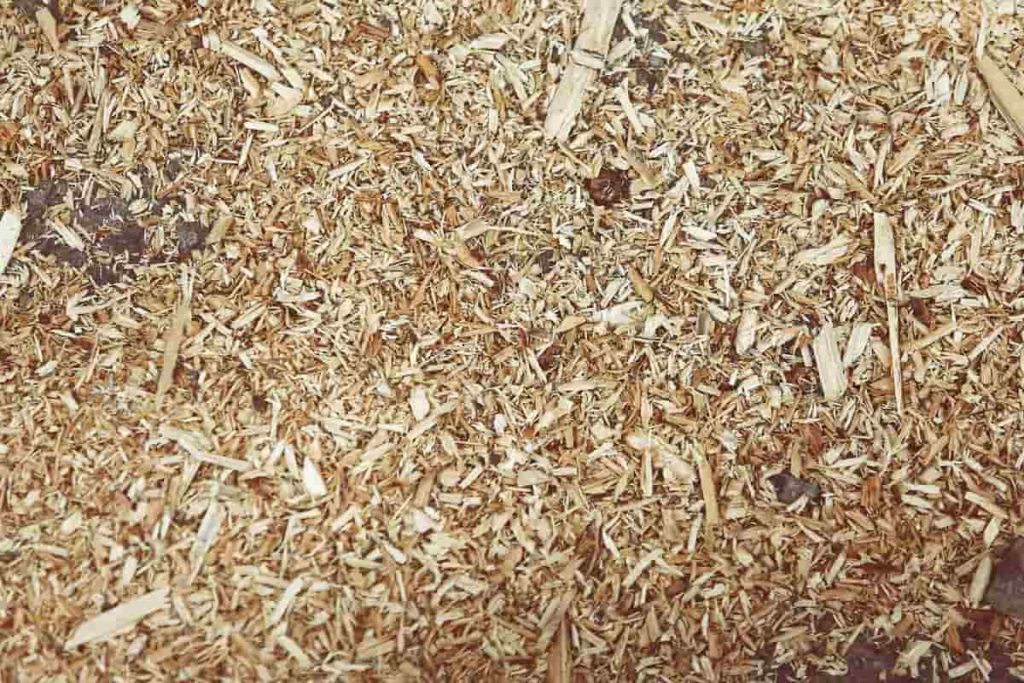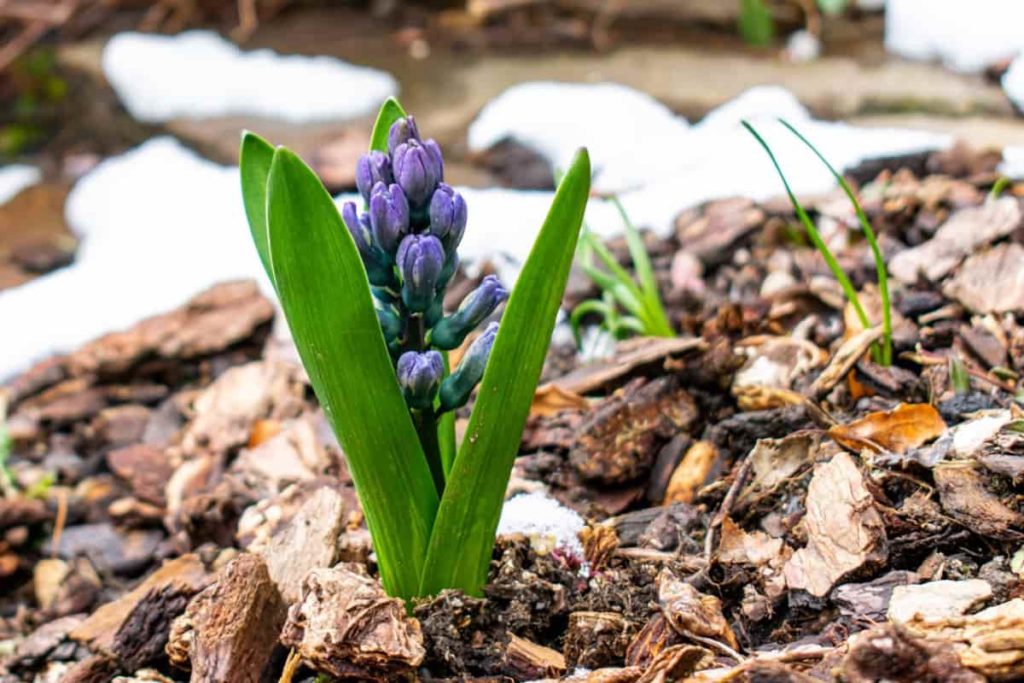What is the mulching process?
Mulch is, at its most basic level, any substance that covers the soil’s surface. Mulch is just fallen leaves and plant detritus in nature. Compost, wood chips, rotting manure, cardboard, or even seaweed can be used as mulch in the garden. We’ve just lately begun to realize mulch’s long-term and ecological advantages. Mulching provides nutrients to our soil’s live microorganisms, and the waste produced by these microscopic microbes builds a better soil structure for plants, reducing stress. Let’s check out the importance of mulch in your garden.

What are the types of mulching?
Mulches are of two types, organic and inorganic. Organic mulches are formed from decomposed plant matter including compost, leaves, bark, and grass clippings. Rocks and gravel are examples of inorganic mulches, but they can also comprise plastic sheeting, landscaping fabric, and ‘rubber mulch.’ Inorganic mulches, unlike organic mulches, do not decompose.
Materials such as plastic take years to degrade which can harm your garden ecosystem. Inorganic mulches don’t give nutrients to the soil and can even prevent nutrients from reaching the soil in some cases. They can, however, provide a more long-term weed control option than organic mulches.
Organic mulches
Homemade garden compost
Homemade garden compost is an excellent all-around mulch for keeping the moisture, reducing weeds, and enhancing soil quality. Turn your compost container every few months using kitchen scraps and chopped-up yard trash. You should have compost that can be used, in 6 to 12 months.
In case you miss this: Garden Plastic Mulch, Uses, Advantages, Disadvantages

Composted woodchips or bark
This heavy mulch decomposes slowly and is good for enhancing soil structure by enhancing drainage and increasing moisture retention. Its dark color also attractively contrasts with the green of flora.
Leaf mould
This is poor in nutrients but a great soil conditioner, leaf mould is a great way to get a rapid return on your investment. Simply bag leaves in the fall and they’ll be ready to mulch around your plants in about a year.
Mushroom compost
This is sometimes known as spent mushroom compost, is a light and easy-to-use alkaline mulch. It’s perfect for lime-loving crops like kale, cabbages, and broccoli, because of its high pH. Avoid applying on ericaceous plants that dislike lime, such as rhododendrons, camellias, and heather.
Horse manure
Horse dung that has been properly rotted is rich in nutrients and maintains moisture effectively. It’s ideal for mulching around hungry plants like roses and vegetables, particularly pumpkins and squashes. If it hasn’t been allowed to decay for at least two years, it can make plant leaves dry and even deplete soil nutrients as it decomposes.
Inorganic mulches
Plastic sheeting
Landscape fabric is spread over the soil to keep weeds at bay. Certain textiles are superior to others. Keep in mind that some will degrade over time, releasing plastic particles into the soil and environment. Impermeable sheeting is also considered to prevent rain, air, or nutrients from reaching the soil, making it a poor choice for use around plants that require water, nutrients, and air to survive.
In case you miss this: Mulching Your Garden – a Basic Guide

Rock mulch
Rock or gravel mulches are commonly used in gravel gardens, and they can assist seal moisture into the soil while also suppressing weeds. Keep in mind that in the sun, rock or gravel mulches can heat up, making the planting area too hot for many plants to flourish. Drought-resistant planting plans are the optimum use for them.
Rubber mulch
Rubber mulch, which is formed from recycled tires, suppresses weeds and decomposes organically, albeit slowly. Rubber mulches, on the other hand, aren’t known to be very harmful. Material from old tires might potentially include several dangerous road chemicals that could bleed into your land.
Benefits and importance of Mulch in Your Garden
Reduces weeds
By laying down mulch, you can reduce the amount of weeding labour you have to perform in your garden. Weeds will be smothered and weed seeds will not develop if mulch is applied three to four inches thick. Weeds that do appear will be easier to eradicate since their roots will not penetrate deep into the soil.
Encouraging earthworms
Earthworms are attracted to organic mulch. The worms create tunnels that allow air and water to enter the soil. They decompose leaves and other organic things as well. Castings are how they get rid of their garbage. Castings help plants develop by acting as a fertilizer.
When you spot earthworms in your yard or potted plants, it typically means your soil is in good shape. Organic mulches like pine straw and compost provide food and shelter for earthworms, while rubber mulches, pebble mulches, and certain mulches manufactured from colored wood chips treated with chemicals do not.
Protects from temperature changes
Mulch aids in soil temperature regulation. When temperatures rise, plant roots stay cooler. Mulch keeps the soil warm in the winter, protecting the roots from the cold. Avoid spreading mulch against tree trunks or plant stems in small piles or mounds. Mulch that comes into contact with your plant’s functions as a bridge, allowing pests to infest them. Instead, form a doughnut shape with the mulch around the plants. Keep it at least two inches away from tree trunks and stems. Air and water still reach plant roots if the mulch is 2 or 3 inches deep.
In case you miss this: Garden Mulching Types, Techniques, and Ideas

Helps retain water
Mulch aids in the retention of moisture in shrubs, trees, and garden beds. Watering your plants will still be necessary, but you may be able to water them less frequently and save money on your electricity costs. The ideal approach to water is using a drip watering system or a soaker hose, which allows the water to seep into the soil and nourish plant roots without flowing off. C coarse mulches, such as pine bark, allow more water to pass through than finely shredded mulches.
Adds nutrients to the soil
Organic mulches decay over time, which is a beneficial thing. They supply nitrogen and other nutrients to your plants when they decompose in the soil. Fresh wood chips, on the other hand, can bind nitrogen as they degrade, so use them only as a top layer of mulch or wait for them to mature before applying. They work better around shrubs and trees than they do around annuals and vegetables. Mulch supplies nourishment to your plants as it degraded, allowing them to grow healthy and strong.
Prevents erosion
Water and rain can wash your soil away, but mulch can help avoid this. It reduces the force with which water droplets strike the ground. In windy places, heavy mulches can aid in erosion management. Mulch can also aid in the prevention of soil compacting in high-traffic areas.
How to apply mulch?
Mulch should be placed two to four inches deep over the soil surface as a general rule. You should add roughly 2 inches of compost mulch in your raised vegetable beds. In some locations, gravel and bark mulch is 3 to 4 inches deep. Keep in mind that the depth suggestion may vary significantly based on the type of mulch used, the area being mulched, and the plants growing there. Some people, for example, use even greater depths of straw mulch since it is light, fluffy at first, and compacts over time.
In case you miss this: Best Fertilizer for Hibiscus: Homemade, Organic, Liquid, NPK, and Compost Manure

Surface preparation
Before mulching, you may have to conduct some prep work. If weed suppression is your aim and weeds are already present, weeding the area completely before adding mulch is preferable. You should consider spreading down a layer of cardboard or a longer-lasting synthetic material cloth first if you’re dealing with very aggressive and persistent weeds in open places such as walkways. Then, over top of it, lay a more natural-looking mulch mixture.
Mulching process
Calculate the amount of mulch you’ll need. Nothing is more aggravating than selecting the mulch you want only to discover that you don’t have enough.It shouldn’t be too thick or too thin. About 2 to 3 inches of mulch layer should be spread. Anything thicker may attract bugs, but it’s also wasteful and useless. Excessively thick mulch might be ineffective, preventing water from reaching the soil.
On the other hand, a thin covering of mulch may not be sufficient to inhibit weed growth or evaporation as planned. You might water it in after mulching to help it settle in. When it comes to mulching beds, there is no such thing as a perfect moment. Mulch will benefit your plants at any time of year. If you reside in a cold area, wait till the ground freezes before mulching in the late fall or early winter.
Mulch your trees and bushes as needed. Mulching around shrubs and trees is an excellent technique to keep mowers and trimmers from hurting them. Spread mulch 2-3 inches thick, just as you would in a bed.
When to apply mulch?
Early to mid-spring and again in the fall are the optimum times to spread mulch. Mulching the garden in the spring gives it a new look and helps to prepare the soil for the upcoming growing season. It’s ideal to get ahead of the spring weeds, blocking their attempts to emerge when the earth warms. I recommend dusting slow-release granular fertilizer over the soil surface first if you want to add it to your garden in the spring.
After that, lay down your fresh mulch and water it in. Wait to severely mulch a veggie garden until any directly-sown seeds have grown. A light layer of mulch, on the other hand, can help keep the topsoil moist and encourage seed germination. A new layer of mulch applied in the fall protects your landscape for the next chilly winter months. Mulch insulates the soil and protects plant roots from cold and snow with a thick, warm, fuzzy layer. It will help keep soil from being washed away by heavy rain.
In case you miss this: Top 10 Tips to Protect Plants from Frost: Ideas and Techniques for Beginners

The nutrients are released and the soil food web is nourished while the organic mulch components settle, mellow, and decay over the winter. It’s worth noting that not all mulch will need to be renewed regularly. Mulch that decomposes more slowly may only require replenishment once or twice a year. Consider putting simply a light 1-inch layer instead of a complete fresh 2 or 3 inches if it has somewhat compacted or only half broken down.
Frequently asked questions about mulching (FAQ)
Do you have to plug out the weeds before starting the mulching process?
While several thin weeds that are just getting started can be picked before mulching, established weeds must be pulled and the area sprayed to guarantee that roots and spores do not come back through the mulch layer. Remove any weeds from the area before mulching a fresh bed.
What time of the year is it best to mulch?
The mulching season is often from mid-to-late spring when the soil has warmed up from the cold temperatures of the winter. If you do it too soon, the warming process will be slowed, which is necessary for the soil to accomplish its work. Mulching late in the fall is also a bad idea.
Are there any disadvantages of mulching?
Mulching’s primary drawbacks are that it can shelter hazardous insects and, if spread too thickly, can smother your plants by warming the soil and depriving them of light and water.
- Seasonal Flower Gardening: Best Practices for Spring, Summer, Fall, and Winter
- How to Grow Hibiscus from Flower
- Plantation Ideas for Home Decoration: A Beginners Guide
- Flower Garden Designs and Layouts for Beginners
- Planting and Spacing Techniques in Papaya: A Beginner’s Guide
- Growing Gold: Essential Techniques for Planting Pineapples
- How to Make Kalanchoe Plant Bushy: Home Remedies and Solutions
- 11 Reasons Why Your Gardenia is Not Blooming: Home Remedies and Solutions
- Eco Elegance: The Guide to Designing a Drought-Tolerant Landscape
- Gardening on a Slope: Strategies for Hillside Landscaping
- Nourish and Flourish: Top Organic Mulches for Thriving House Plants
- Everything You Want to Know about Indian Mogra Flower: Discover Uses and Growing
- Green Thumb Success: Expert Tips for Cultivating Greenhouse Pumpkins All Year Round
- Maximize Growth & Flavor: The Ultimate Guide to Companion Planting in Herb Gardens
- How to Control Rhododendron Problems Naturally: Home Remedies and Organic Ways to Fix Them
- Natural Magic: The Remarkable Benefits of Cinnamon for Plants
- Best Steps to Revive Dying Tulip with Natural and Organic Treatment
- 10 Reasons Why Your Angel Trumpet is Not Blooming: Remedies and Treatment
- How to Fix Periwinkle Leaf and Flower-Related Problems: Natural Remedies and Solutions
- How to Fix Zinnias Leaf and Flower Problems: Discover Natural and Home Remedies
- Organic Steps to Induce Lemon Tree Flowers: A Comprehensive Guide
- Bloom Booster: Crafting the Perfect Homemade Bougainvillea Fertilizer
- Optimizing Growth: A Guide to Applying NPK Fertilizer for Potted Plants
- 10 Best Homemade Fertilizers for Rubber Plant: DIY Recipes and Application Method
- How to Boost Female Pumpkin Flowers: Effective Steps for More Flowers and High Yields
- Transform Your Indoor Garden: Top Benefits of Pink Salt for Houseplants
- 10 Best Homemade Fertilizers for Peacock Plants (Calathea): Easy DIY Guide
- Unlock Blooms: 9 Reasons Why Your Potted Chrysanthemum is Not Blooming
- 8 Reasons Why Your Potted Hibiscus is Not Blooming: Fix it with Simple Solutions
- Unlock Blooms: 9 Key Reasons Your Potted Frangipani Won’t Flower
- 10 Reasons Why Is My Ice Plant Not Blooming: Remedies and Treatment
- 10 Reasons Why My Potted Hydrangea Not Blooming: Treatment and Remedies
- 10 Reasons Why is My Wisteria Not Blooming: Remedies and Treatment
- 10 Reasons Why is My Goldfish Plant Not Blooming: Remedies and Treatment
- Maximize Your Space: Ultimate Guide to Balcony Gardening with Grow Bags
- 10 Reasons Why Your Iris is Not Blooming: Remedies and Treatment